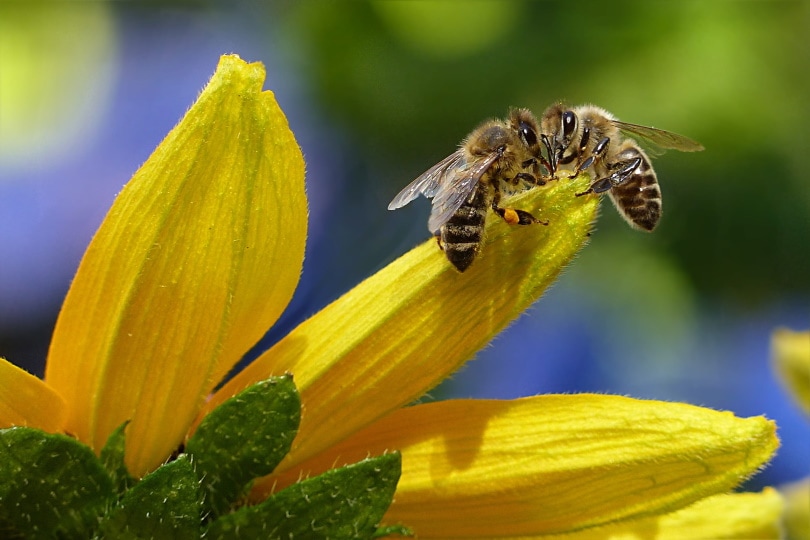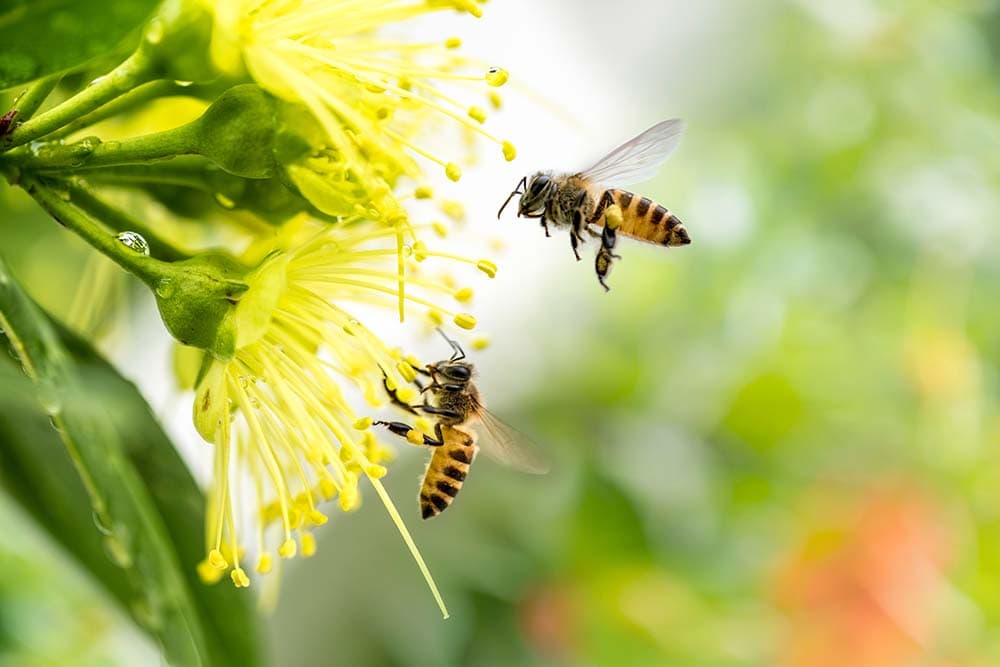Are Bees Endangered? Reasons, Tips, & FAQ
-
Brooke Bundy
- Last updated:

Bees are worth buzzing about. Although they might be annoying to encounter on a patio picnic, humans need them to support our food chain by pollinating plants that produce crops. Apples, broccoli, and even your cup of coffee might have been cultivated by our busy little friends. However, human practices such as harmful pesticide use and excessive tree clearing have severely damaged the bee population in recent years. Some bees, such as the honeybee, are doing well because they are cared for by beekeepers who cultivate their honey. Others, such as the American bumble bee, have seen a sharp decrease in numbers warning of near endangerment and even extinction. Let’s learn more about what bees are endangered and what you can do to help.
Are Bees Endangered? Why?
There are over 20,000 species of bees, and not all of them are endangered. Some of them, such as the honeybee, are actually doing quite well thanks to backyard beekeepers across the U.S. who care for these honey-producing workers. Others, however, such as the rusty-patched bumble bee, have greatly diminished populations, and are now considered an endangered species.
There are many reasons why some bees aren’t thriving. In general, we humans have created an environment that isn’t beneficial to their needs. Bees tend to live underground or in plants such as trees, depending on the particular species. As North America continues to urbanize, green spaces where bees can grow have almost disappeared in some areas.
Climate change pushes some bee populations further south, but since bees live in one location for most of their lives, many will die instead of moving away from home. They don’t even migrate for the winter, preferring to hunker down where they are and wait it out. Finally, broad spectrum pesticides are the most invasive reason some bee species are low on numbers. Synthetic pesticides that target and kill all insects aren’t good for bees—or humans.

What’s At Stake?
If the bee population continues to decline, the impact will be felt far beyond the hive. Plants that don’t reproduce by asexual means such as self-pollination would suffer huge population declines and might even cease to exist. Plants that sexually reproduce require their pollen and seeds to be carried to another plant to keep multiplying. Although bees aren’t the only pollinators, they contribute to the process significantly.
Even self-pollinating plants benefit from bees because their pollen is transferred quicker and more efficiently. Coffee plants are self-pollinating, but researchers say that bees are responsible for 20-25% of the crop because they help the plants produce more efficiently. If bees become endangered or extinct, it would result in severe food shortages and the detriment of many flower species, which mostly rely on sexual reproduction for new plants to grow.

What You Can Do to Help the Bees
If you’re concerned about the hurting bee population, there are a few things you can do as a homeowner and consumer to prevent further damage to this valuable community. You can help the bees in the following ways.
Grow Bee-Friendly Plants
If you’re an avid gardener, include some plants in your plot that’ll attract bees to your yard. Bee balm is a classic choice, but different bee species are drawn to different plants. You might try planting a variety of flowers and vegetables of different sizes to attract bees with long and short tongues for sucking nectar. Also, be sure to avoid sterile hybrid plants that don’t produce nectar.

Eliminate Pesticides
Don’t allow any broad-spectrum pesticides into your green space. These aren’t safe for you, your pets, or the bees. Research natural methods for dealing with your particular nuisance because there are different ways for dealing with each pest such as ants or mosquitoes. A one-size-fits-all approach is rarely safe and may have waning efficiency as some pesky creatures are developing a tolerance to pesticides.
Buy Locally and Responsibly
As much as possible, source your plants and produce from local businesses that are happy to disclose their bee-friendly agricultural practices. If your community doesn’t participate in a farmer’s market, buying organic at your grocery store will still make a difference.
Speak Out
Spread the word as much as possible. You might invite your neighbors for a party featuring foods made or pollinated by bees. Encourage them to include bee-friendly gardens in your neighborhood. If you really feel passionately about the bees, petition your government on the local, state, and federal level for environmentally friendly legislation that will protect our winged friends.

Conclusion
While not all bee populations are on the decline, certain species are down to endangerment levels, and environmental threats such as loss of habitat and pesticide use pose a threat for all bee species. You can help cultivate a healthy world for bees by planting nectar-producing flowers, eliminating pesticide use in your yard, buying organic, and spreading the word to your friends and neighbors. If the bee population is decimated, the world as we know it will never be the same. A significant reduction in pollinators will result in a food shortage for humans and animals, and the devastation of most flowering plants.
- https://www.fairplanet.org/story/the-risks-and-dangers-of-bee-extinction/
- https://www.npr.org/sections/thetwo-way/2017/09/11/550169720/coffee-bees-and-climate-change-are-linked-in-ways-you-may-not-have-expected
- https://www.canr.msu.edu/news/what_do_you_really_know_about_bees
- https://biologicaldiversity.org/w/news/press-releases/american-bumblebee-takes-step-toward-endangered-species-act-protection-2021-09-28/
- https://www.discovermagazine.com/planet-earth/yes-some-pollinators-need-saving-but-honeybees-are-actually-doing-just-fine
- https://brightly.eco/are-bees-endangered/
Featured Image Credit; Piqsels
Contents
